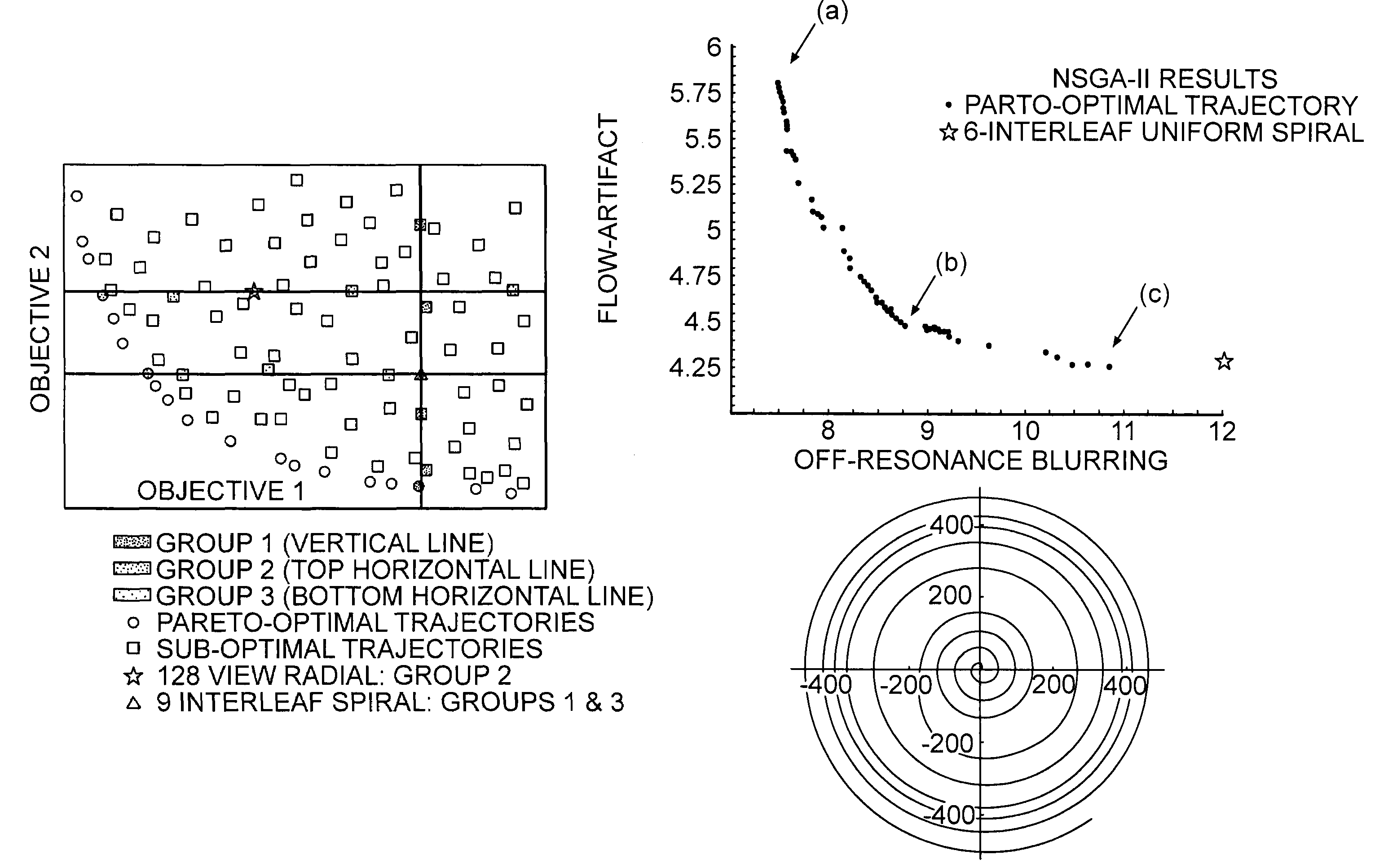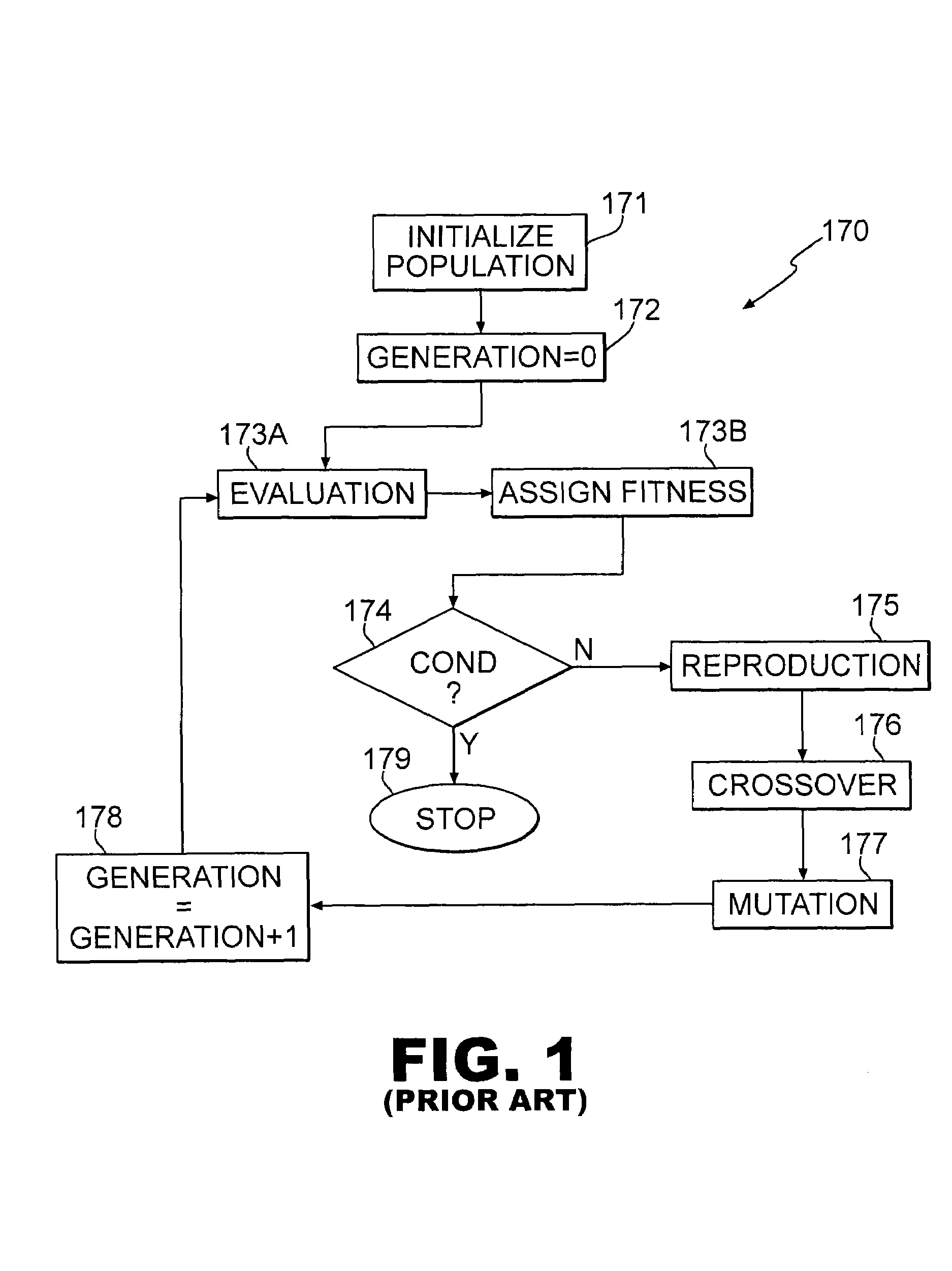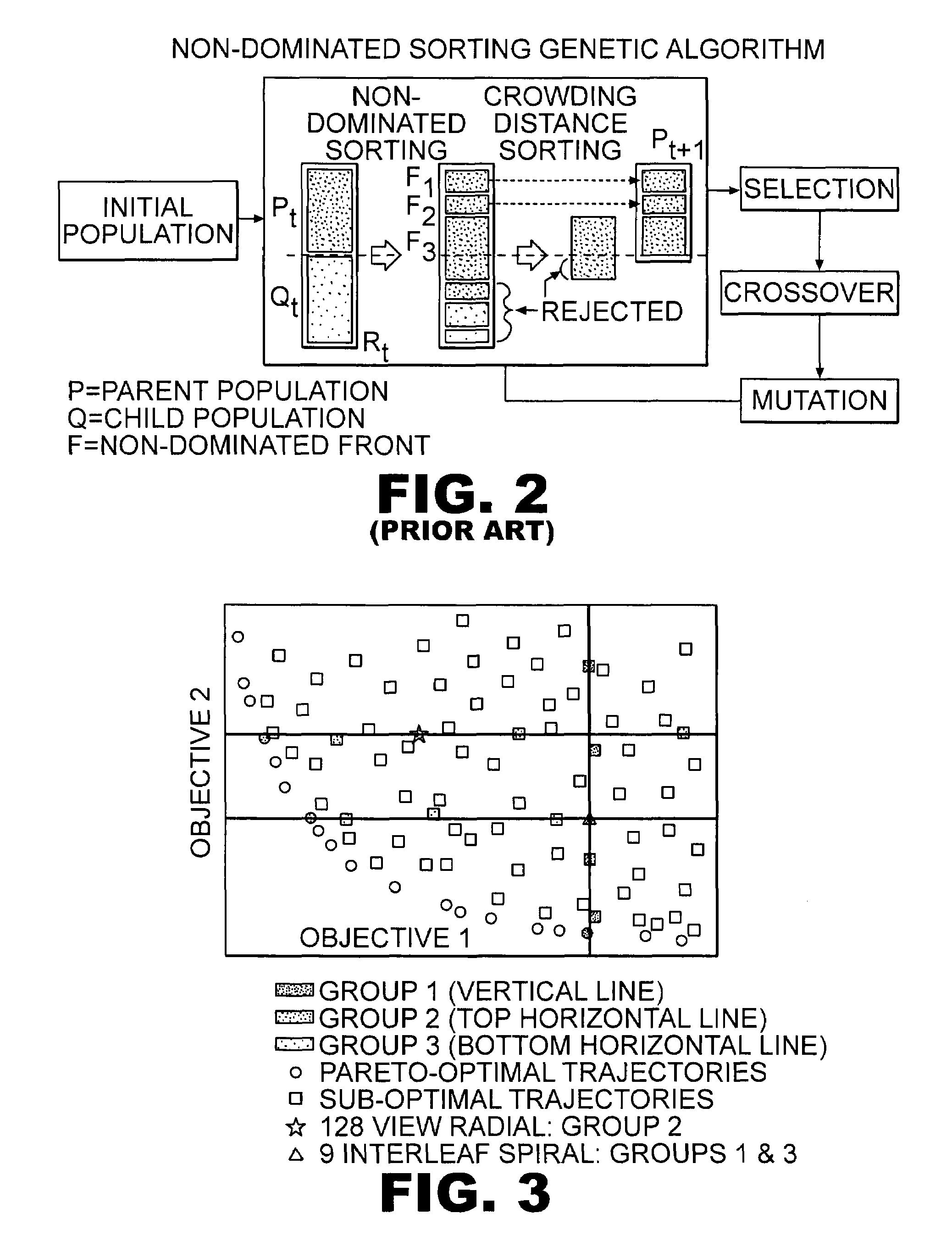Pareto-optimal magnetic resonance data acquisition
a magnetic resonance and data acquisition technology, applied in the direction of instruments, reradiation, measurement using nmr, etc., can solve the problem that the general understanding of the impact of k-space trajectories on mr image quality is quite limited
- Summary
- Abstract
- Description
- Claims
- Application Information
AI Technical Summary
Benefits of technology
Problems solved by technology
Method used
Image
Examples
example 1
[0074]Referring now to FIG. 4, the aforedescribed method optimizes the k-space trajectory for both acquisition time and aliasing energy (in the image domain), with the goal of minimizing each. These objectives are merely exemplary and chosen for their simplicity and ease of computation.
[0075]In a first exemplary embodiment, trajectories are encoded as an (n+1)-tuple (e.g., an (n+1)-vector), wherein the first number represents the number of interleaves, followed by n real numbers, representing the spiral density (dθ / dr) for each of n annular regions of substantially equal width ranging, for example, from about 0 m−1 to about 500 m−1. The following (n+1)-tuple was used in Example 1: [1, 0.804248, 0.804248, 0.804248, 0.804248, 0.813981, 0.781736, 0.804248, 0.75656, 0.837202, 0.804248, 0.804248, 0.754025]. The first number is the number of interleaves (=1), and the remaining twelve numbers denote the spiral density dθ / dr for 12 corresponding annular regions.
[0076]The trajectory is deter...
example 2
[0085]In a second example, k-space trajectory design is formulated in terms of an optimization problem aimed at minimizing off-resonance blurring while retaining the beneficial flow properties of spiral trajectories. As has been mentioned, spiral imaging is significantly less sensitive to flow artifacts, but exhibits increased sensitivity to off-resonance blurring. This may be particularly problematic in applications, such as cardiac imaging, where sharp changes in tissue susceptibility exist near the region of interest. An optimized trajectory may be expected to retain the advantageous relative insensitivity to flow, while being also less sensitive to off-resonance effects.
[0086]Off-resonance and flow-artifact energy are multi-modal, non-differentiable, and highly non-linear functions of the k-space trajectory. Most optimization techniques are unsuitable for handling such intractable, or nearly intractable, functions. The multi-objective genetic algorithms described above, however,...
PUM
 Login to View More
Login to View More Abstract
Description
Claims
Application Information
 Login to View More
Login to View More - R&D
- Intellectual Property
- Life Sciences
- Materials
- Tech Scout
- Unparalleled Data Quality
- Higher Quality Content
- 60% Fewer Hallucinations
Browse by: Latest US Patents, China's latest patents, Technical Efficacy Thesaurus, Application Domain, Technology Topic, Popular Technical Reports.
© 2025 PatSnap. All rights reserved.Legal|Privacy policy|Modern Slavery Act Transparency Statement|Sitemap|About US| Contact US: help@patsnap.com



